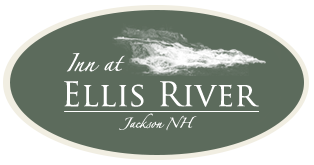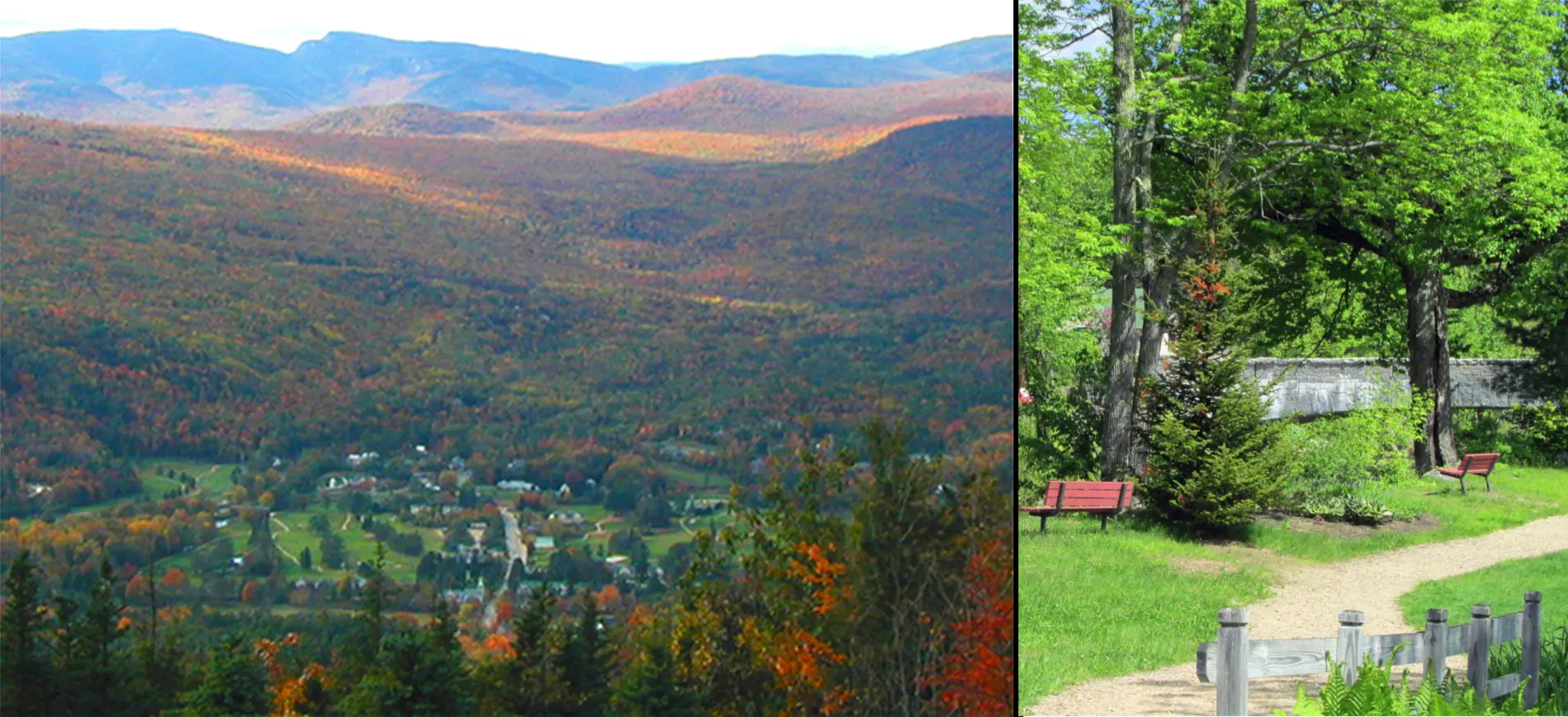The village of Jackson is fortunate to be the home of so many buildings of historical interest that The Jackson Falls Historic District was added to the National Register of Historic Places in 2003. To view the 17 contiguous structures in the District, put on your walking shoes, grab your camera, and head up Route 16B (Carter Notch Road) which begins in front of the Wentworth Hotel and walk along the Wildcat River as far as the cascades of Jackson Falls. The Wildcat is the first river in the country to receive the protection of The Wild and Scenic Rivers Act.
Just before the parking area near the falls, on the opposite side of the street you will notice the driveway entrance to a private residence which hides in the trees on a promontory overlooking the town. This magnificent “Castle” was built by General Marshall Clark Wentworth for his wife, Georgia, in 1891. The sumptuous structure, complete with eight original fireplaces and servant quarters, was her home until she died in 1930. It is currently privately owned.
The two-tone salmon colored house next to the Wildcat River marks the start of the District. A two-story octagonal tower dominates the southwest corner of the home, which was built about 1900 for James Pratt, the chauffeur of Wentworth Hall, by General Wentworth. This house was built by a local carpenter named, Andrew Harriman who also built the farmhouse from which the Inn at Ellis River was eventually created.
As you continue down the hill, the two-story former parsonage sits broad side to the street with its foundation resting in the millrace paralleling the river. Note that the many original windows in this 1911 structure are all multi pane over one, with the largest being 24 over 1. The single-story porch is supported by Roman Doric columns.
As you continue down the hill, the four Victorian buildings on your right as well as two other “cottages” next to the Jackson Community Church all currently serve as lodgings for guests of The Wentworth Hotel. The first is the Wildwood Cottage built in 1889 on the edge of the Wildcat River and moved to its current site when the stone bridge was constructed in 1931. Note the interesting roof details on the next building, the Sunnyside Cottage (1915) which was the last of the buildings constructed by the Wentworth family. It blends so well with the earliest dwelling, the Arden Cottage (1880) next door that it is thought that William Bates designed both. Some of the details to note on all these Queen Anne-style structures are the interesting roof details, windows, dormers, and projections. A special point-of-interest is the eyebrow window on the roof of the Thorneycroft Cottage (1885). Adjacent to Thorneycroft Cottage, at the end of Carter Notch Road, is the Wentworth itself, an historic resort hotel (1882) which was predated in this location by the Thorn Mountain House. This was built in 1869 by Joshua Trickey as a present for his daughter on the occasion of her marriage to General Wentworth. Around 1880, the General moved the original house back and connected it to the new main building by a covered walkway.
The quintessential picture of Jackson —the Jackson Community Church (1846-47) and the original Jackson Public Library (1901)– is a favorite of photographers. The Greek revival style chapel remains the setting for weekly services and hosts many weddings. It was built at a cost of $1,003.90 by the Protestant Chapel Association which still owns it. Ownership of pews may be passed down in the same family, but cannot be sold except back to the PCA for resale. There is a long waiting list!
The PCA also owns the land on which the “Free Public Library for the Town of Jackson, NH” was built. The building was home to the village library until 2010. A Boston architect, William Ralph Emerson designed both the library and the Jackson home/studio of White Mountain artist, William Shapleigh.
Looking to your right beyond the church, the remaining two historic landmarks, the 1920 Fairlawn Cottage and the Amster Cottage are also part of the Wentworth complex. The design details which are simpler than the earlier cottages reflect the changing architectural styles and increased cost of construction.
The stone bridge on your left (1931) replaced an iron bridge is now located on Valley Crossroad upstream above Wildcat Falls. Before you cross the bridge, appreciate how roads were kept passable in winter with the use of snow rollers like the one on display next to the river.
On this side of the river, much local activity is centered in the historically significant Jackson School (original portion built in 1860 (by Andrew Harriman) and the old Town Hall (1879). The new Whitney Community Center (next to the school) stands on the site of the Jackson Falls House complex , the first hotel in Jackson. The Trickey Barn remained on this site until recently, which was deconstructed and adaptively reused as the new town library adjacent to the town offices (beyond the Historic District on Main Street). Of special interest is the interior construction of the two story 37’by 80’ structure.
The old Town Hall, listed on the National Register of Historic Places, was built by Andrew Harriman who built the original buildings at the Inn at Ellis River as his home. Almost all the towns in NH had a ” town house,” later called a town hall, where town meetings were held. Today, the building houses the Jackson Historical Society and also hosts art exhibits in the River Arts Gallery. On, Tuesday, July 29, 2025, this historic building was moved forward to protect it from the periodic rises in Jackson Falls. It has been a months’ long project. It is in the same general area but further down and directly across from Jackson Grammar School. To learn more about the history of the village and its families visit the Society’s exhibits which portray Jackson’s roll as a center of hospitality for decades.
17 Harriman Road Jackson, NH 03838
1 Carter Notch Rd, Jackson, NH 03846
Jackson, NH 03838
Jackson, NH 03838
Carter Notch Rd, Jackson, NH 03846
Jackson, NH 03838
Jackson NH 03846
Jackson, NH 03846
Jackson, NH

